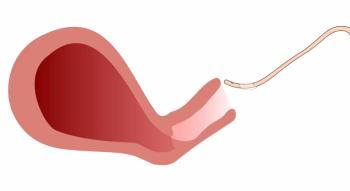Takeaways
- Early and individualized counseling—including discussions about pregnancy continuation, medication management, and multidisciplinary care—is central to improving outcomes.
- Hydralazine, isosorbide dinitrate, and loop diuretics are preferred for managing acute heart failure in pregnancy, while beta-blockers should be continued when appropriate.
- Postpartum monitoring and breastfeeding counseling are essential, as many maternal cardiovascular events occur after discharge.
The Society for Maternal-Fetal Medicine (SMFM) has released new recommendations addressing the diagnosis and management of right and left heart failure during pregnancy and the postpartum period. The guidance, Consult Series #73, emphasizes early counseling, multidisciplinary care coordination, and referral to specialized centers to optimize maternal and newborn outcomes.1,2
Heart disease remains a leading cause of pregnancy-related deaths in the United States, with a disproportionate burden among non-Hispanic Black individuals. Heart failure—a syndrome in which the heart cannot pump blood effectively—is a major contributor to maternal morbidity and mortality and is associated with adverse perinatal outcomes such as low birthweight, lower Apgar scores, prematurity, and increased risk of death.
“Heart disease is a leading cause of maternal deaths, and it’s a growing problem,” said Arthur Jason Vaught, MD, a maternal-fetal medicine subspecialist and critical care physician at Johns Hopkins Medicine, and a member of the SMFM Publications Committee. “This new guidance focuses attention on heart failure in pregnancy so that we can improve both short- and long-term quality of life for our patients. Getting accurately diagnosed and treated for heart disease, either before pregnancy or early in pregnancy, is both life-prolonging and life-changing if caught early.”
Risk assessment and counseling
SMFM recommends that patients with known heart failure receive preconception or early pregnancy consultation to assess individual risk and identify maternal and perinatal health concerns. The guideline underscores that pregnancy is a state of hemodynamic stress, which can exacerbate existing cardiac disease and mimic symptoms of heart failure, such as shortness of breath and fatigue.
Patients with severe pulmonary arterial hypertension or a left ventricular ejection fraction less than 30% should be counseled on the substantial risks of morbidity and mortality. Abortion care should be available to all patients with heart failure, regardless of severity, as part of individualized counseling and risk communication.
For those with a history of peripartum cardiomyopathy, decisions about future pregnancies should be individualized. Patients whose ventricular function has fully recovered should be informed about recurrence risk and severity if heart failure returns.
Medication and treatment guidance
SMFM advises clinicians to review medication compatibility before conception and during pregnancy. The following agents should be discontinued or avoided because of teratogenic or safety concerns:
- Sodium-glucose cotransporter inhibitors (SGLT2i)
- Spironolactone
- Angiotensin-converting enzyme (ACE) inhibitors
- Angiotensin II receptor blockers (ARBs)
- Angiotensin receptor–neprilysin inhibitors (ARNi)
These medications should be replaced with alternatives such as hydralazine or isosorbide dinitrate for afterload reduction and furosemide for diuresis in acute left ventricular heart failure. β-blockers, including metoprolol, carvedilol, and bisoprolol, are recommended to continue when clinically appropriate.
During pregnancy, inotropic blockade with β-blockers is not advised in acute decompensated heart failure, and prophylactic anticoagulation is recommended for hospitalized pregnant patients with acute left ventricular dysfunction. Postpartum, ACE inhibitors, ARBs, or ARNi may be used for afterload reduction unless contraindicated.
Delivery and postpartum management
Delivery planning should begin early and involve a multidisciplinary team—typically obstetrics, maternal-fetal medicine, cardiology, anesthesiology, and nursing. The guidance recommends planned vaginal delivery at term for most stable patients, with cesarean delivery reserved for obstetric indications. Neuraxial anesthesia is advised to manage pain and limit hemodynamic stress during labor.
Postpartum, patients remain at elevated risk because of sudden cardiovascular volume changes. The guideline stresses close inpatient monitoring after delivery, individualized discharge planning, and early follow-up to mitigate the high risk of postpartum cardiac complications.
Routine counseling on infant feeding should be provided, and all medications should be reviewed for compatibility with breastfeeding. ACE inhibitors are considered compatible, while caution is advised with ARBs, aldosterone antagonists, and SGLT2 inhibitors due to limited neonatal safety data.
















